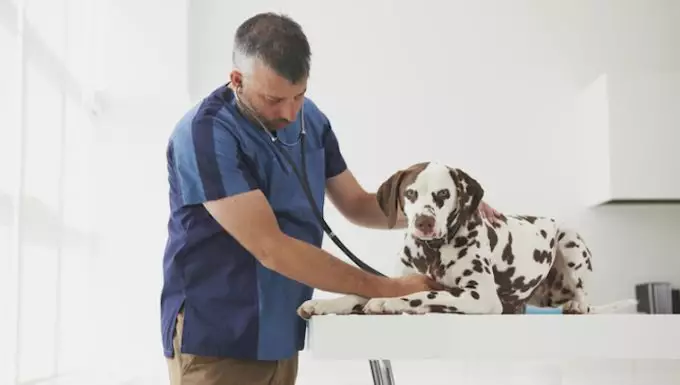Lung cancer, specifically squamous cell carcinoma, is an alarming issue facing our canine companions, albeit it remains an infrequent diagnosis. The gravity of this condition becomes especially apparent when considering that it predominantly affects older and larger dog breeds. Breeds such as Labrador Retrievers and German Shepherds exhibit a higher predisposition, warning passionate pet owners to remain cautious. While the direct causes of this cancer may be intertwined with environmental factors and breed susceptibility, the implications for canines suffering from this disease are indeed profound.
Recognizing the Warning Signs
Pet owners need to maintain a vigilant eye for the warning signs that could indicate lung cancer. Symptoms can manifest subtly but escalate quickly, sometimes leading to grave consequences if left unaddressed. Common indicators include persistent coughing, noticeable weight loss, respiratory distress, and decreased appetite. More severe symptoms may include coughing up blood or the presence of blood in urine and feces. The unpredictability of these symptoms often leads to heightened anxiety for pet parents, making early detection and intervention crucial for a positive outcome.
Identifying the Root Causes
Understanding the potential risk factors associated with squamous cell carcinoma can empower dog owners to take preventive measures. Environmental toxins and secondhand smoke are significant contributors that could serve as precursors to this aggressive cancer. Furthermore, the statistical likelihood of older dogs and larger breeds developing lung cancer cannot be ignored. This creates a pressing need for targeted education and preventative strategies tailored to these high-risk groups. By minimizing exposure to harmful substances, pet owners may potentially enhance their dog’s quality of life.
Diagnostic Measures and Vet Evaluations
A thorough veterinary evaluation is paramount when dealing with the possibility of lung cancer in dogs. The diagnostic process will usually begin with a detailed questionnaire about your pet’s symptoms and history. This information provides critical insight into breed-specific issues that may play a role in the disease. Following this, a comprehensive physical examination, along with blood and urine tests, will help elucidate the health status of the dog. More invasive procedures like endoscopy and biopsy can definitively diagnose squamous cell carcinoma, allowing prompt intervention.
Treatment Options and Supportive Care
When a diagnosis is confirmed, treatment typically leans towards surgical intervention to excise the cancerous tissue, often supplemented by chemotherapy. Yet, the journey does not end there. Post-operative care plays a pivotal role in the recovery phase. Dogs undergoing treatment require a peaceful and controlled home environment that emphasizes rest. The importance of controlled exercise cannot be overstated; thus, developing a manageable exercise regime with the veterinarian’s guidance is vital for the dog’s physical and emotional recovery.
The stark reality of squamous cell carcinoma highlights the urgent need for awareness and action. As more pet owners gain insight into this formidable condition, they can proactively safeguard their beloved pets’ health. It’s not just about treating illness; it’s about fostering a deeper connection through education and care.

